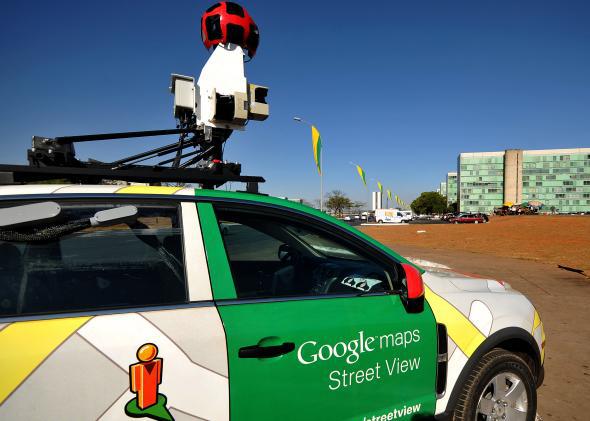Google Street View trucks are known for capturing weird things, going to remote places, and generally causing drama. Oh, and privacy violations. This one falls into that last category: A Canadian judge has ordered Google to compensate a woman whose cleavage was captured by Street View cameras and put on the service for all to see. Maria Pia Grillo says she suffered emotional trauma as a result of the boob incident.
When she found her house on Street View in 2009 she saw herself sitting in front of her house and leaning forward. The angle of the photo reveals a lot of cleavage and about half a breast. Originally Grillo’s face was blurred, which is standard on Street View, but she felt that she was still identifiable because she was sitting in front of her own home. You can see the photo over at Canadian tabloid Journal de Montreal.
In 2011 Grillo told Google that she wanted the rest of her body blurred out along with other identifying information in the scene like her house and license plate number. She also requested 45,000 Canadian dollars in compensation for emotional distress and damage, which apparently included ridicule from colleagues. Google blurred out a large portion of the image but didn’t want to pay her. The company said that it was within its rights to photograph her in public, and denied that boobgate (as it came to be called … by me) was related to her emotional issues.
Grillo took the dispute to court and judge Alain Breault ruled at the beginning of October that Google has to pay Grillo 2,250 Canadian dollars plus 159 Canadian dollars in court costs and interest since June 8, 2011. The judge felt that Grillo’s emotional issues weren’t tied to boobgate, but believed that the front stoop of Grillo’s house was still part of her home and that she was entitled to privacy there, even if she could be photographed.
As Gigaom points out, the judge also noted that privacy laws are a bit different in the United States and Canada, and said that he had taken a “European approach” in deciding the case.
